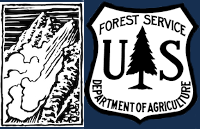Stabilizing Quickly
We rode Buck Ridge through First Yellowmule, Buck Creek, Second Yellowmule and into McAtee Basin. Pulses of snow through the day dropped an inch or two by the time we left. Light winds, no avalanches, and no signs of instability to report. The measured storm total above the melt-freeze crust was 11" (1.3" of SWE) at the top of 1st Yellowmule. The snow was well bonded to the underlying surface. Quick pits testing the snow above the melt-freeze crust yielded no indicators of instability.
The riding was quite nice other than the lowest section of the Doe Creek Road is melted out. It was fine on the way in, but very muddy on the way out.
Triggering an avalanche is unlikely UNLESS:
- The wind picks up to speeds capable of transporting snow.
- The temperatures increase or slopes get hit by the warm spring sun.
- There is another significant pulse of snowfall.
